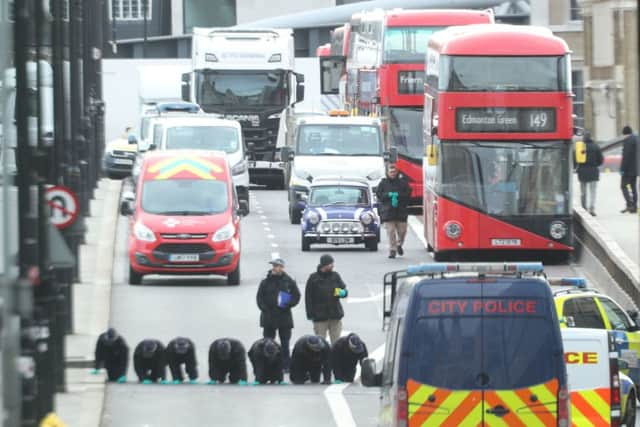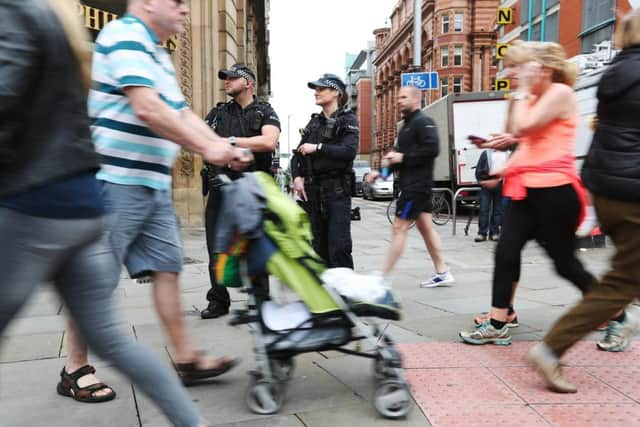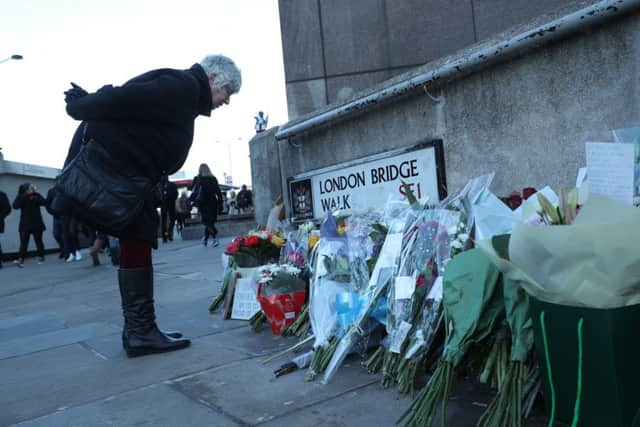I took counter terrorism training and this is what I learnt


After astoundingly brave members of the public grounded a knife-wielding killer on London Bridge with the help of a fire extinguisher and a 5ft narwhal tusk last month, I was among the many people prompted to ask themselves how they would respond if they were caught up in such a terrorist attack.
It is a near-impossible question to answer and fortunately for most of us we will never face such a test – but now a counter-terrorism training course previously only available to specialist workers has been opened up to the wider public, offering the opportunity to be better prepared for such an eventuality. UK Counter Terrorism Policing has explained that while the London Bridge attack is not the reason why the programme has been made more widely available, the tragic events, which resulted in the deaths of two people, are “a stark reminder of the ongoing threat and the need for vigilance”.
Advertisement
Hide AdAdvertisement
Hide Ad

After both North Yorkshire Police and West Yorkshire Police encouraged members of the public to participate in the online Action Counters Terrorism (ACT) Awareness training programme earlier this month, I decided to give it a go.
The training course begins with a stark message that it contains scenes “of a violent nature which some viewers might find upsetting” before segueing into a news clip describing how the threat to the UK is evolving at a scale and pace never seen before.
News footage then reels off some of the recent incidents in this country and around the world – from the Manchester Arena bombing, the Parsons Green train explosion, the Finsbury Park van-driving attack, as well as those seen on Las Ramblas in Barcelona, the Paris attacks in 2015 and the Quebec City Mosque mass shooting.
Advertisement
Hide AdAdvertisement
Hide AdOne of the most immediately shocking things to me is just how many of these terrible incidents had faded from my memory as terror attacks on ordinary people have become so commonplace in recent years.


The course, which takes around an hour to complete, then runs through a series of interactive modules such as how to identify suspicious activity in a public place through assessing CCTV footage of a shop and a supermarket car park as well as taking a quiz to recognise potential security vulnerabilities at your place of work and the best ways to handle a phone call from someone making a bomb threat to your organisation.
The interactive quiz following a suspicious individual making their way through a hospital workplace contains common-sense but useful advice such as not leaving uniforms and ID badges lying around and challenging strangers with polite questions like ‘Can I help you?’. I managed only six out of eight correct on the quiz – missing the sight of a fire extinguisher propping open a door to a secure area and the chance for a couple of members of staff to challenge the person. But, in common with the other modules, I felt more alert to potential dangers and ways in which I could approach than before the start of the course.
Perhaps the most useful section comes at the end of the training on how to respond if you find yourself caught up in a terrorist attack. The advice is simple but not something I had heard before – ‘Run, Hide, Tell’.
Advertisement
Hide AdAdvertisement
Hide AdIt is in obvious contrast to the heroics seen on London Bridge recently but counter-terrorism bosses are clear that getting away from an attack is the best way to save lives “in almost every case”.
The training module includes an interview with a survivor of the 2015 Tunisian beach shooting who followed the protocol by advising her mother and other guests to hide in their locked hotel rooms as the attack was taking place.
The ACT Awareness programme was originally launched to business and private sector partners in April 2018 in response to the terrible multiple attacks of 2017. The collaboration between Counter Terrorism Policing, Marks & Spencer and eLearning specialist Highfield was originally aimed at people who worked in retail and crowded public places.
Counter Terrorism Policing’s National Co-ordinator for Protect and Prepare, Deputy Assistant Commissioner Lucy D’Orsi, says that around 350,000 people from almost 6,000 companies had already taken part but since the public launch on December 9 this year, there has been a “huge spike” in interest with 12,000 registrations in the first week compared to the previous average of 300 per month.
Advertisement
Hide AdAdvertisement
Hide Ad“This training has been around since 2018 and the decision to offer the training to the public was actually made months before the recent attack in London,” D’Orsi explains. “The idea to launch was certainly not a reaction to that attack. However, the tragic events which took place just weeks ago, when two people lost their lives to terrorism, were a stark reminder of the ongoing threat and the need for vigilance. Police and security agencies are working tirelessly to protect the public, but key to our collective security is an engaged public.”
D’Orsi says while the bravery of those who tackled the London Bridge attacker was extraordinary, the Run, Hide, Tell advice is very much still the recommended approach. “I think we were all inspired by the bravery shown by those members of the public and first responders who ran towards the danger rather than away from it. Obviously if people decide that choosing to fight is the best option for them, then we will never criticise that.
But our RHT advice has been designed to save as many lives as possible across a huge number of different attack scenarios.
“In almost every case, the best way you can keep yourself and others safe is to run from the danger, hide if you cannot run and then, and only when it is safe to do so, tell the police about what is happening.”
Advertisement
Hide AdAdvertisement
Hide AdIn November, the terrorist threat to the UK outside of Northern Ireland was downgraded from severe to substantial and D’Orsi says it is important to remember that it is statistically “very unlikely” most people will ever get caught up in an attack. But she says doing the training allows people to feel more in control and able to react positively should the worst happen.
“We want the public to be alert, but not alarmed. It’s very unlikely you will ever get caught up in a terror attack, so it is not proportionate for people to be walking around with a sense of fear or panic. But that being said, police and the security services have foiled 25 attack plots since March 2017 and the recent attack in London is a further reminder that the threat from terrorism has not gone away.
“If people can dedicate 45 minutes to completing this training, that should give them everything they need to know to help protect themselves and others in the long run. A small investment of your time now could save your life, or the lives of others.”
Course popular with participants
One of the local people to take the training recently is Will Burnham, who works at the Jorvik Viking Centre visitor attraction in York.
Advertisement
Hide AdAdvertisement
Hide AdThe 29-year-old says: “I thought it was great. It just confirmed and solidified things I already knew. There were no huge revelations but it gave you the skills and protocols to feel confident in what to do.
“One thing I found interesting was giving you the skills to feel confident in addressing and challenging someone while not offending them, which can be tricky.”
Ninety per cent of people who have taken the course would recommend it, according to police stats.
Lucy D’Orsi says: “We developed each stage alongside industry experts and to date over one and a half million modules have been completed. The course has been so popular, with nine out of 10 users saying they would recommend it, we want to open it up to as many people as possible.
Advertisement
Hide AdAdvertisement
Hide Ad“The threat level remains at Substantial – meaning an attack is likely – so giving everyone the chance to be extra eyes and ears for police and local security teams help to keep all communities safe.”
The course is hosted by online training specialists Highfield. To register and start learning, visit www.ct.highfieldelearning.com.